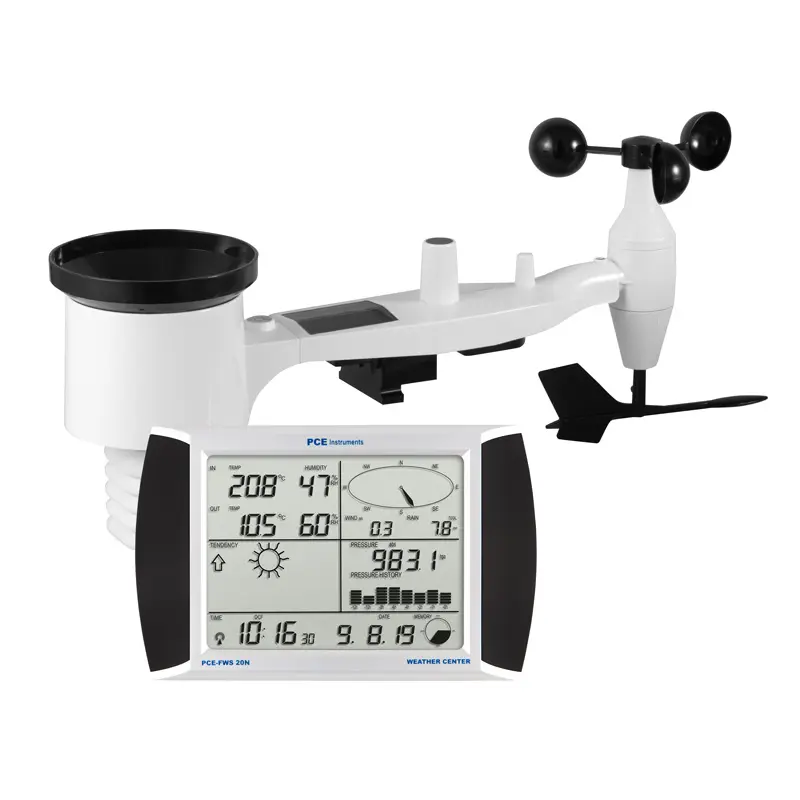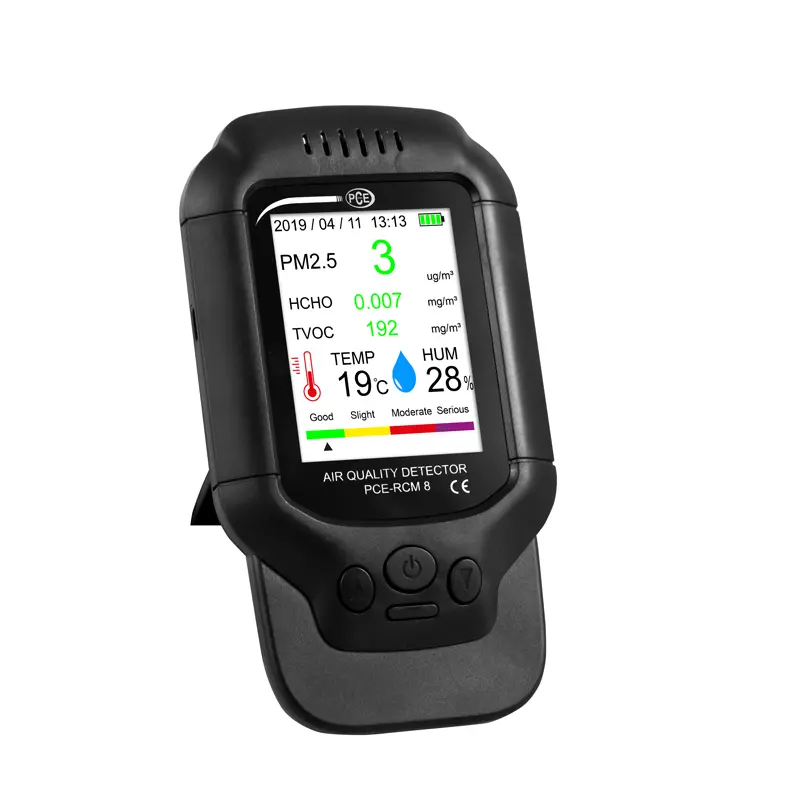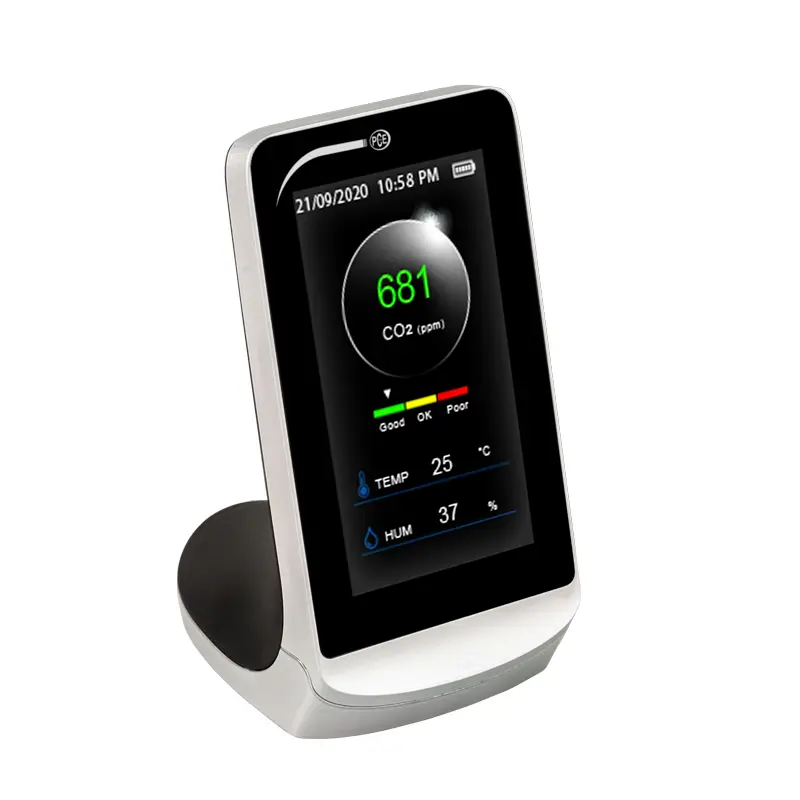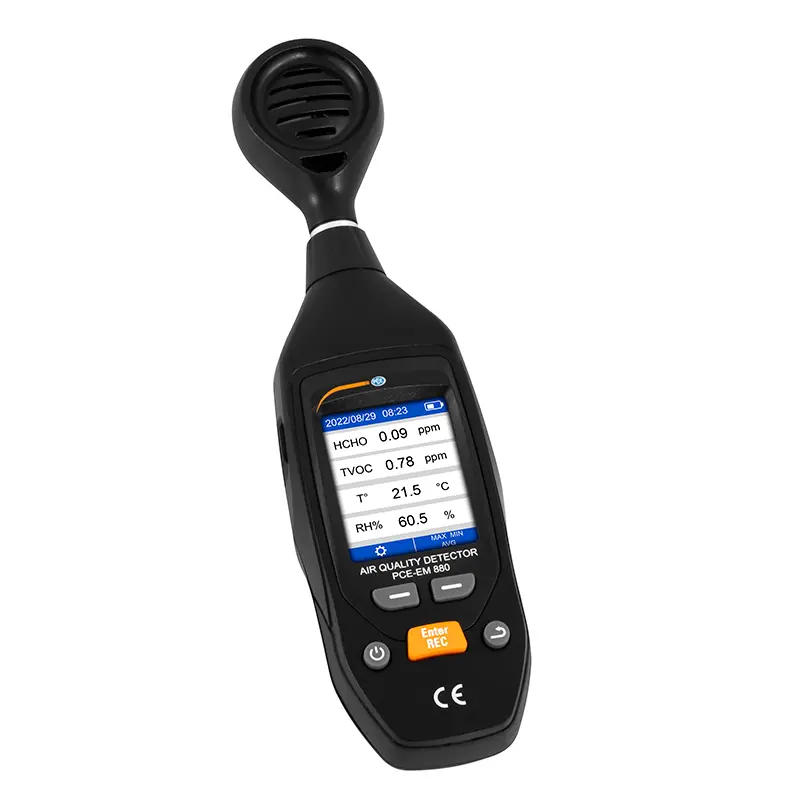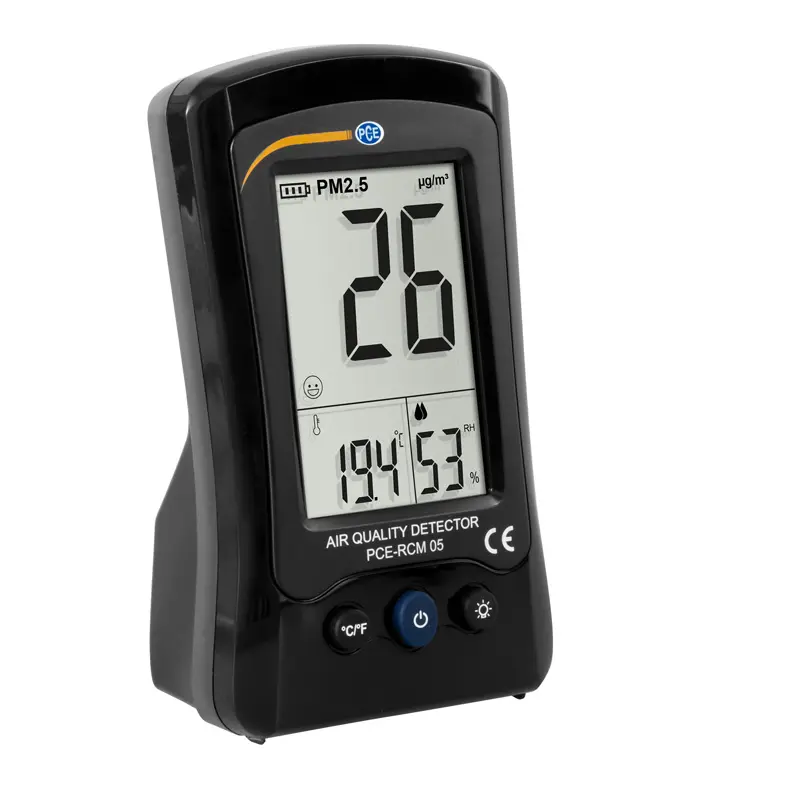Air Quality Meter
An indoor air quality meter is a device that measures the quality of the air inside a building. It is essential to ensure that the air is safe to breathe and free of pollutants. The device typically measures temperature, humidity, carbon dioxide levels, and other volatile organic compounds (VOCs) in the air. It can help identify potential health risks such as respiratory problems, allergies, and other issues related to poor indoor air quality. With an indoor air quality meter, you can be sure that the air inside your home or office is safe and healthy for you and your family. So, it’s important to invest in a good quality indoor air quality to ensure you’re breathing in clean air.
- Indoor temperature in Celsius or Fahrenheit
- Outside temperature in Celsius or Fahrenheit
- Indoor air humidity / outdoor air humidity
- Air pressure gauge in inHg or hPa
- Absolute or relative air pressure display selectable
- Precipitation indication in mm or inch
- Precipitation indicator for 1 hour, 24 hours, 1 week, 1 month
- Wind speed in mph, km / h, m / s, knots …
- Wind direction indicator
- Wind chill temperature gauge
- Weather forecast, trend indicator, storm warning
- and much more…
-
- Formaldehyde in mg / m³
- Measurement of TVOC
- Temperature measurement
- Alarm function
- Mass concentration
- Large CO2 measuring range up to 5000 ppm
- Traffic light function for carbon dioxide
- Measures temperature and humidity
- 5 h graph for long-term monitoring
- Suitable for classrooms, nurseries/kindergartens, lecture halls
- HCHO measuring range: 0.00-5.00 mg/m³
- TVOC measuring range: 0.00-9.99 mg/m³
- Temperature measuring range: 0-50 °C / 32-122 °F
- Humidity measuring range: 0-100% RH
- Memory for 5000 measuring points
- Measuring range PM2.5: 0 … 500 μg / m³
- Measuring range temperature: -10 … 50°C / 14 … 122°F
- Measuring range humidity: 0 … 99% rh
- Pictograms indicate air quality
- Battery operation
- Micro USB for charging
7 Essential Tips for Buying an Indoor Air Quality Meter for Your Home or Office
With the increasing concern about air pollution and its effects on human health, it is essential to monitor the indoor air quality of your home or office. An indoor air quality meter or monitor can help you keep an eye on the levels of pollutants such as carbon dioxide, formaldehyde, and other harmful substances in the air you breathe. In this article, we will provide some tips to buy an indoor air quality meter that meets your needs.
-
Identify the pollutants you want to monitor: Before buying an air quality meter for your home, it is essential to identify the pollutants you want to monitor. Some of the common pollutants include carbon dioxide, formaldehyde, particulate matter (PM), and volatile organic compounds (VOCs). Knowing which pollutants you want to monitor will help you choose the right air quality check meter that can detect those pollutants.
-
Determine the type of air quality meter you need: There are different types of air quality monitors available in the market, each with its own features and capabilities. Some air quality monitors are designed to detect only one type of pollutant, while others can detect multiple pollutants. Some air quality monitors are portable, while others are fixed and can be installed in a specific location. Consider your needs and budget to determine the type of air quality meter that is right for you.
-
Look for an accurate and reliable air quality monitor: The accuracy and reliability of an air quality monitor are essential factors to consider when buying an air quality meter. You want an air quality monitor that provides accurate and reliable readings so that you can take appropriate actions to improve the air quality in your home or office. Look for an air quality meter that has been tested and certified by reputable organizations such as the Environmental Protection Agency (EPA) or the National Institute of Standards and Technology (NIST).
-
Check the sensor technology used in the air quality meter: The sensor technology used in an air quality meter determines the accuracy and reliability of the readings. Some air quality meters use electrochemical sensors, while others use optical sensors or laser technology. Each sensor technology has its own strengths and weaknesses, and you should choose an air quality meter that uses a sensor technology that is appropriate for the pollutants you want to monitor.
-
Consider the data logging and analysis capabilities of the air quality monitor: An air quality meter that can log and analyze data over time can provide valuable insights into the trends and patterns of indoor air quality in your home or office. Look for an air quality monitor that can store data over an extended period and has software that allows you to analyze the data and create reports.
-
Look for an air quality meter with user-friendly features: An air quality monitor that is easy to use and understand can make a significant difference in how effective it is in improving the air quality in your home or office. Look for an air quality meter with a user-friendly interface, clear instructions, and easy-to-understand readings. Some air quality meters come with additional features such as alarms, which can alert you when the pollutant levels exceed a certain threshold.
-
Compare prices and features of different air quality meters: Air quality meters come in different price ranges, and it is essential to compare prices and features of different air quality monitors before making a purchase. Look for an air quality meter that offers the features you need at a reasonable price. Keep in mind that the cheapest air quality meter may not always be the best, and it is worth investing in a high-quality air quality meter that will provide accurate and reliable readings over the long term.
Some of the popular air quality meters available in the market include the Igeress formaldehyde detector pollution monitor, the CO2 carbon dioxide air quality monitor pollution & ventilation meter, and the Air Quality Meter Pollution & Formaldehyde Detector Sensor Tester. These air quality monitors come with different features and capabilities,
and can help you monitor the levels of pollutants such as formaldehyde, carbon dioxide, and other harmful substances in the air you breathe.
In conclusion, an indoor air quality meter is an essential tool for monitoring the air quality in your home or office. By considering the factors outlined in this article, you can choose an air quality meter that meets your needs and provides accurate and reliable readings. With the right air quality monitor, you can take steps to improve the air quality in your indoor environment and protect the health and well-being of yourself and those around you.

